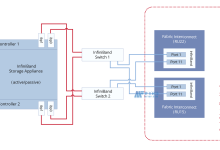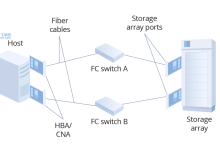DNS, or Domain Name System, is a critical component of the Internet, facilitating the resolution of domain names to their corresponding IP addresses. If you want to manage your own DNS services on linux systems, understanding the basics of how DNS works is an invaluable skill. In this article, we will outline some best practices and techniques for mastering DNS on the Linux platform.
To begin with, it’s important to understand the fundamentals of DNS. At its core, DNS is a distributed database that maps domain names to their corresponding IP addresses. This data is stored in various DNS servers, which query each other to resolve a name and return the appropriate IP. These servers then cache the results for a period of time so that subsequent requests are quicker.
The first step in mastering DNS on Linux is to learn how to view the contents of the DNS resolution process. The best tool for this is the dig command provided by the bind-utils package. Using this command, you can directly query DNS servers for name resolution and glean information about the resolution process, such as which servers are being used, any existing cached results, and any errors. To view the results of a name resolution, simply run the command as follows:
“` bash
dig example.com
The output returned will contain all the DNS records associated with the domain, such as A, NS, CNAME, MX, and TXT records. It will also provide a list of the DNS servers that were used in the resolution process, along with the time it took to complete the process.
Once you understand the DNS resolution process, the next step is to learn how to configure your own DNS services. With the right knowledge, it's possible to manage an entire DNS architecture from the ground up, including setting up multiple DNS servers, configuring DNS forwarding and reverse lookup, customizing domain-specific records such as MX, and monitoring the performance of the system.
These topics are far too extensive to cover in this article, but the first step is usually to install and configure a DNS server such as BIND on your Linux system. Doing this is relatively straightforward and the installation process is usually handled by the package manager. Once installed, you’ll need to edit the configuration files to define your domain parameters and add any custom records you need.
It's also important to familiarize yourself with other DNS-related tools and services. The dig utility we mentioned previously is great for testing and troubleshooting DNS records, however there are other powerful tools available such as digiconv, which provides graphical representations of DNS server responses, and zonecheck, which performs synthetic tests to ensure there are no anomalies with DNS.
Finally, mastering DNS on Linux requires some patience and ongoing maintenance. DNS servers must be regularly monitored to ensure that they are functioning properly and that users can reach the appropriate sites. Similarly, the configuration files should be reviewed on a regular basis for any discrepancies or errors.
In conclusion, mastering the fundamentals of DNS on the Linux platform can be a daunting challenge but the rewards are definitely worth it. Once you understand the base principles and familiarize yourself with the tools available, managing and configuring your own DNS services can be a highly rewarding experience.

 国外主机测评 - 国外VPS,国外服务器,国外云服务器,测评及优惠码
国外主机测评 - 国外VPS,国外服务器,国外云服务器,测评及优惠码












